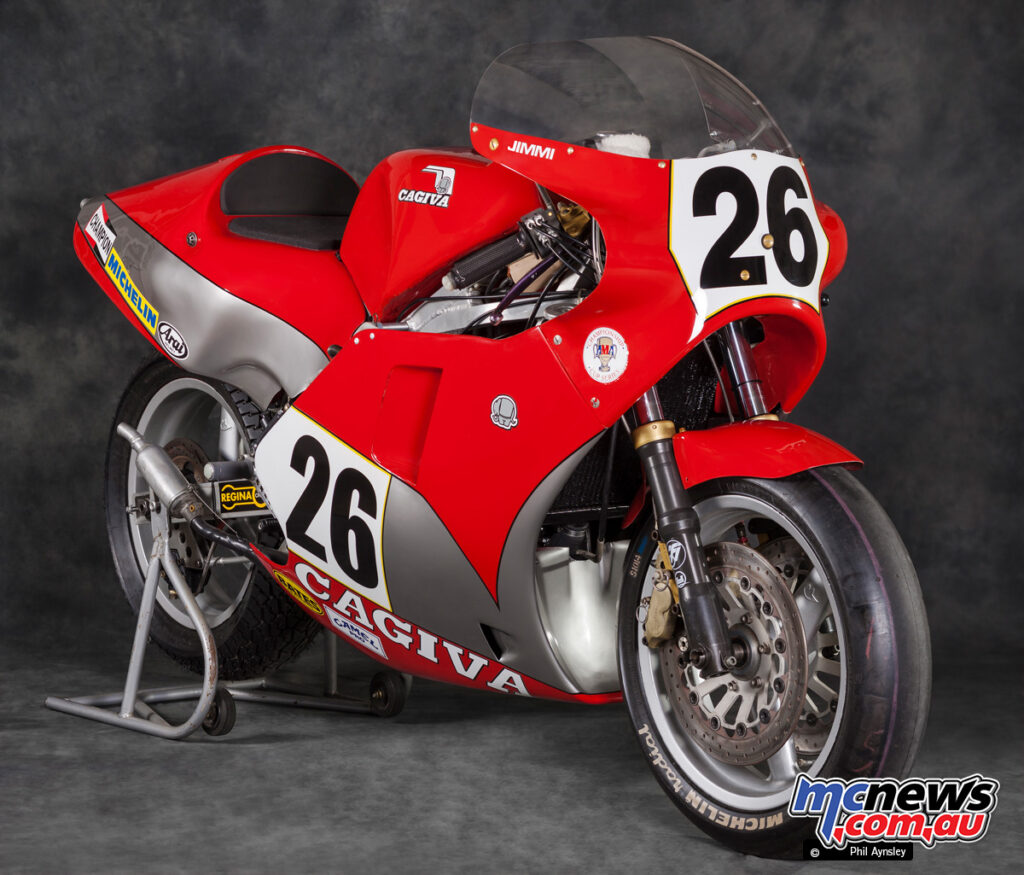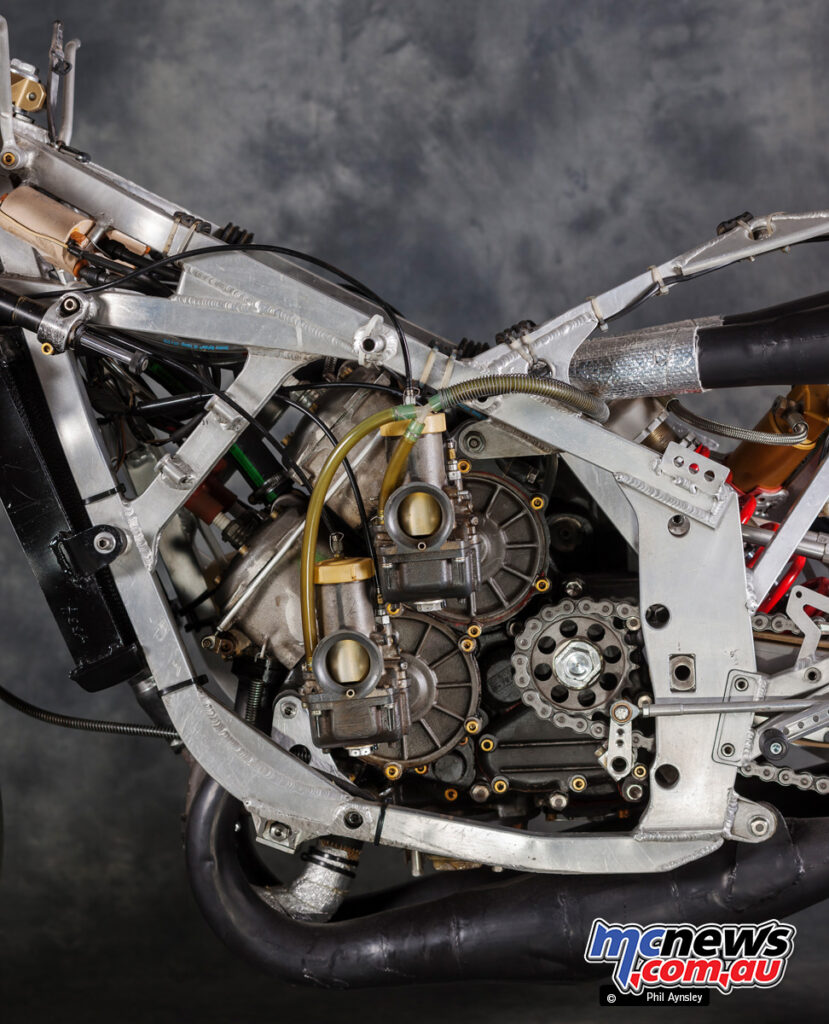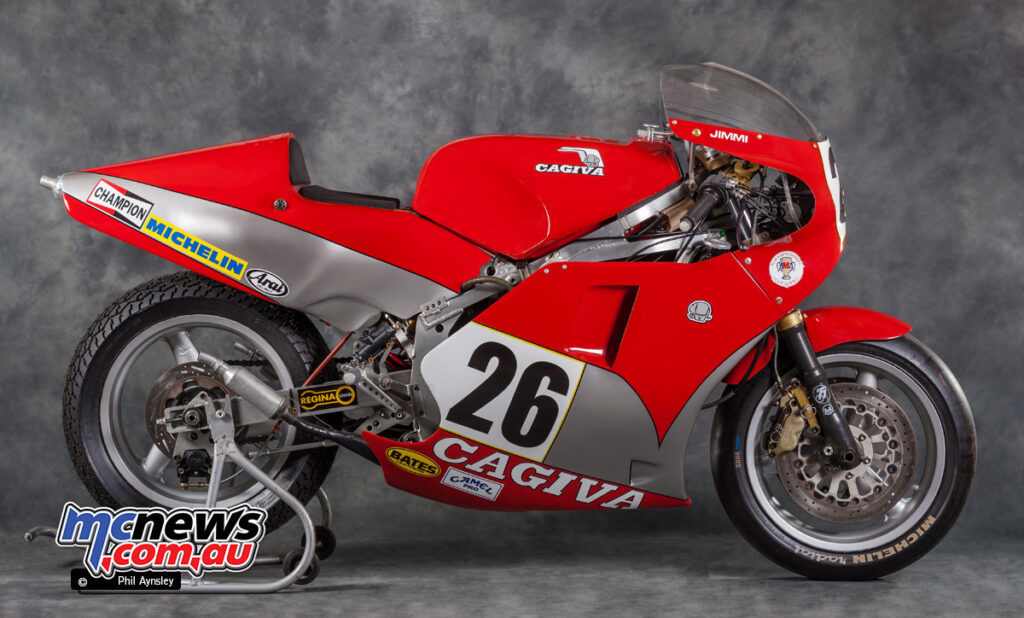1984 Cagiva C9 Racer
With Phil Aynsley
Cagiva began its 500cc Grand Prix efforts in 1978 – with a Suzuki RG500 painted red and silver, after failing to purchase the MV Agusta team when it quit racing at the end of 1976.

1980 saw the introduction of the 1C2, powered by a somewhat modified Yamaha TZ500 motor housed in a Nico Bakker chassis. It wasn’t until the following year that a completely in-house engine design (the rotary-valve in-line C2C) took to the track, still with Virginio Ferrari as the rider – but results proved less than spectacular.
For the 1982 season the newly developed 3C2 used a rotary-valve square four motor similar to Suzuki’s RG500 and the chassis was developed in-house. Jon Ekerold scored the team’s first point with a 10th at Hockenheim.

1983 was a lost year after a new open cradle frame that used the motor as a load bearing member proved to be a failure. The C7 made 132 hp but weight was up by 5 kg to 125 kg.
In 1984 six revamped bikes were built (the C9) for riders Marco Luchinelli and Hervé Moineau, but despite better handling provided by a square section alloy chassis, and a motor that didn’t loose power as the race went on, the best result was a 10th place by Luchinelli in the Yugoslavian GP.

The aerodynamic bodywork was developed in the Aermacchi wind tunnel at Verase. The C9 was the last model to use the square four layout as Cagiva moved to a V4 in 1985 for the C10.
The C9 seen here was sent to the US in ’85 to Reno Leoni’s team for Jimmy Adamo to race. It remained in the US and was restored prior to my photographing it in 2014.
Source: MCNews.com.au




























 Timur Sardarov
Timur Sardarov
 Cagiva V-Raptor
Cagiva V-Raptor Giovanni when he was still boss in 2018
Giovanni when he was still boss in 2018 John Kocinski’s Cagiva V594
John Kocinski’s Cagiva V594

















